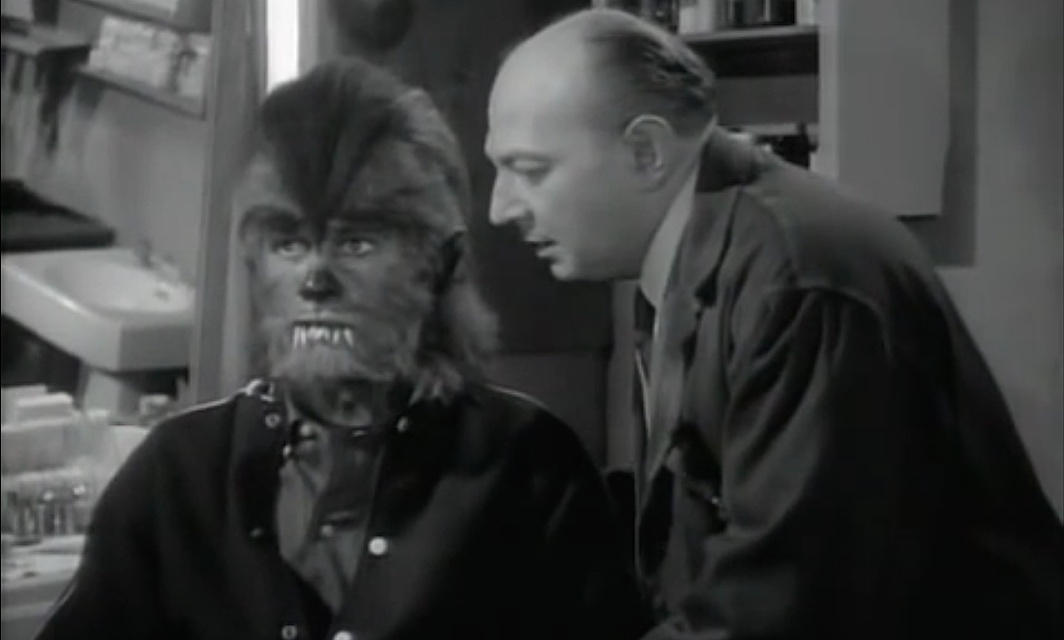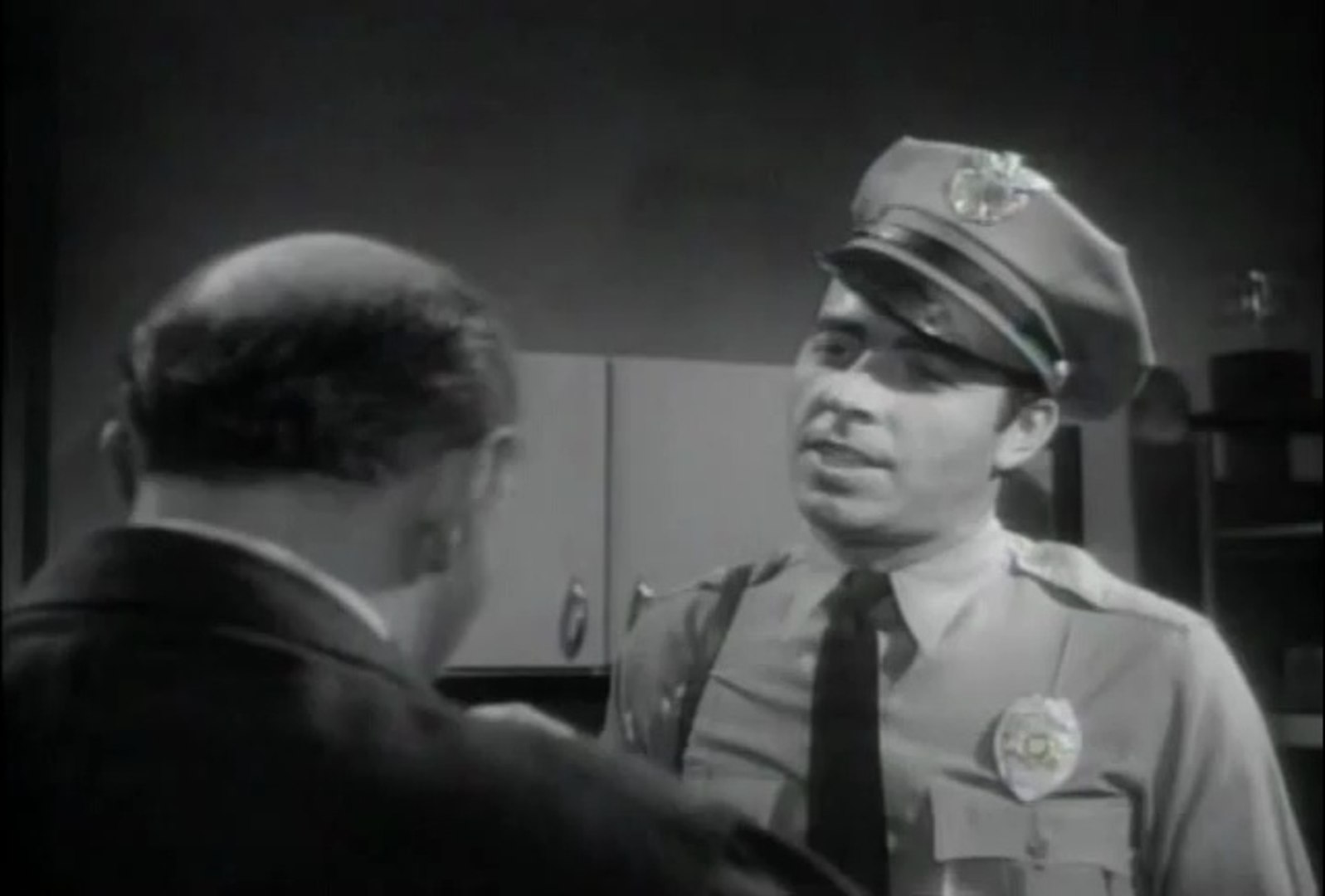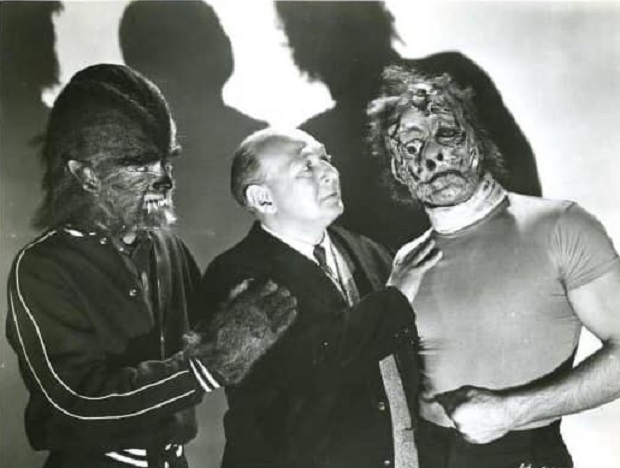The idea of a horror movie sequel is certainly nothing new, the concept is pretty much as old as the genre itself, but with the film How to Make a Monster American International Pictures took it to a new level with what could be best described as a “Behind the Scenes” meta-monster-movie as it is not a sequel to their previous hits I Was a Teenage Werewolf or I Was a Teenage Frankenstein, instead, it’s a film about the making of something that could best be described as “Teenage Werewolf vs Teenage Frankenstein” only with a mad make-up artist as the primary villain.
The film’s protagonist is veteran monster make-up artist Pete Dumond (Robert H. Harris) who has been working for American International Studios for twenty-five years only to suddenly find out that his services are no longer required, a new regime has taken over the studio and has decided focus productions on such things as musicals and comedies and not the fading horror genre. Such an indignity Dumond will not take lying down and with the aid of his mild-mannered assistant Rivero (Paul Brinegar) he comes up with a plan to bring down the studio, but what can a couple of ageing movie men do against this new wave of studio execs? How about an evil plot involving a foundation cream in his monster make-up kit which has a numbing agent that leaves the wearer pliable to hypnotic suggestion?
“You will go and get me a ham sandwich.”
If that seems like a rather ludicrous plan to you then strap yourself in because the movie doesn’t get any better as the plot has teenage werewolf actor Larry Drake (Gary Clarke) and teenage Frankenstein monster Tony Mantell (Gary Conway) being “seduced” by Dumond who once he has them under his hypnotic control he sends them out to kill the new studio heads – for this we must ignore the belief that a person under hypnosis will not do anything against their nature, that is if we are to believe that Larry and Tony aren't some kind of Leopold and Lobe killers – but soon things get a little out of control when an ambitious security guard (Dennis Cross) starts nosing around and the cops try and break Rivero with a rather homophobic interrogation.
“Are you brainwashing young men again?”
Stray Observations:
• It’s obvious that the lead character was based on legendary make-up artist Jack Pierce, who himself was given the pink slip after faithfully creating most of the classic Universal Monsters.
• Gary Conway returns for the part of a teenage Frankenstein monster but Michael Landon was too busy shooting Ponderosa to revise his teenage werewolf.
• We get Dumond telling Rivero how he prefers working with young actors, seeming to really care for Larry and Tony, which makes his “I’ll use them as instruments of murder” to be a rather hard left turn characterwise.
• Dumond tells Larry Drake his acting career is over once the studio stops making monster movies because his fans only know him under monster make-up, which makes no sense as he plays a werewolf and thus his fans must have seen him in human form at some point.
• A studio security confronts Dumond with his documented suspicions about the first murder, with evidence that indicates Dumond could very well be the killer, yet he does this in such a bizarre jovial manner, as if tipping off the killer that you are on to him is a healthy thing to do.
• That only one person witnessed Tony Mantell in his teenage Frankenstein make-up as he made his way to Dumond’s home across town after committing the murder is probably the most fanciful nature of the film.
• The faux-Elvis musical number that was to indicate the direction the studio was going towards is pretty accurate as AIP was soon making Annette Funicello and Frankie Avalon beach movies.
That Elvis never made a musical monster movie is a crying shame.
In the late 50s, there was definitely an oversaturation of monster movies and the genre had quite fairly reached the end of its current cycle, which makes producer Herman Cohen’s film How to Make a Monster very timely, unfortunately, even at a mere 75 minutes in length the story runs out of steam quickly and can’t seem to sustain its own ridiculous premise, so as prescient as this film can be called it’s also an example of a combination of weaknesses consisting of a low budget and a not completely thought script that resulted in a less than stellar final product. Then there is the gimmick of the last act changing from black and white to colour that adds nothing to the proceedings and then the film ends rather abruptly with a “House of Wax” style fire burning the madman’s many works of art and such pesky questions as “Do the police charge Tony and Larry for the murders they committed under hypnosis?” are left unanswered.
“Don’t worry, the teens at the Drive-in will be too busy making out to notice such trivialities.”
How to Make a Monster is an interesting entry in the horror genre and if a little more time had been given to the script it could have become a classic – the reveal that his mask collection contained actual skulls within hinted at a much darker and more interesting character – alas, this was not to be, instead we simply got another charmingly goofy movie from American International Pictures, which to be fair is not necessarily a bad thing.






No comments:
Post a Comment